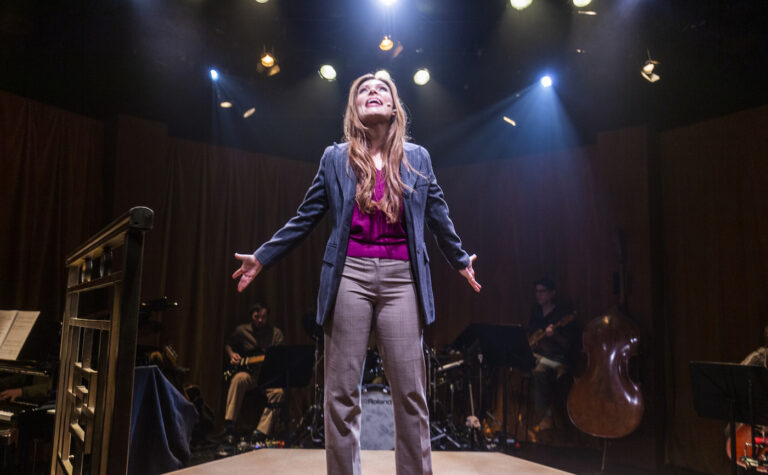
Why Melbourne is leaving Sydney in the dust
With a cheap last minute flight booked on a budget carrier, I jetted off to Melbourne for the weekend. Tucked away in a reasonable room in the leafy enclave of East Melbourne, I never once ventured south of the Yarra. Every morning around eleven, I ambled off to brunch on Brunswick Street at one of the funky cafes nestled between rows of chic bohemian shops. In the evening hours I dined at one of the many bustling outdoor trattorias on Lygon Street featuring handmade pasta, excellent mains and damned delicious coffee. As I walked past a range of independently owned small shops offering a variety of locally crafted furniture, artisan made decorations, underground music stores, heady bookstores, upscale fashion boutiques and groovy retread thread shops I wondered: where in all of Sydney would you find the same range of small retail shops that you find in Melbourne? The rueful fact is that you can’t.
The contrast between Australia’s two largest metropolises couldn’t be starker. While Melbourne is home to more small, independent unique boutiques than you can shake a credit card at, Sydney’s retail environment is increasingly dominated by large chain shops, soulless box stores and massive mega malls. While Sydney has allowed market forces and the mighty dollar to decide what will happen in the local retail economy, Melbourne has developed a plan to protect, attract and support a diverse range of shopping experiences in Victoria’s capital city. In the mid nineties, faced with the imminent relocation of Australia’s financial services from Melbourne to Sydney, the southern city developed a plan to ensure that it remained Australia’s premiere shopping city. Developed jointly by both the State and local governments, Melbourne’s Retail Strategy has ensured that Melbourne ranks as one of the world’s leading shopping destinations: up there with Paris, Milan, Barcelona, San Francisco and Montreal.
Melbourne’s position as Australia’s leading retail city has not come about accidentally. Melbourne consistently has been named one of the world’s most liveable cities for good reason. In order to guarantee that Melbourne remains cutting edge, the city encourages artists (who are truly small business operators) to live, work and create in key city precincts. Sydney does not. Melbourne tracks the mix and vitality of businesses that trade on its streets to guarantee that the city maintains a diverse range of shops offering authentic shopping experiences. Sydney does not. And while Melbourne actively seeks out retailers that it thinks will improve the overall retail range, by offering small business financing to attract and retain local businesses, the City of Sydney has not actively courted small business (with the exception a similar program to kick start small bars). Here in NSW the RTA and various layers of government remove parking spots from City streets for sport, while Melbourne actively seeks to ensure that there are enough parking spaces and transport options available for customers to shop in local stores. As if all that weren’t enough, local government also monitors the bureaucratic red tape it imposes on local small businesses and seeks to diminish governmental hurdles to doing business in Melbourne.
By comparison Sydney’s nanny state is anti small business. Here in NSW the city unleashes a torrent of regulatory hurdles designed to ensure that most small shop keepers don’t even bother doing business here in Sydney. Lord Mayor Clover Moore MP’s recent announcement she had set up a new CBD centric Retail Advisory Board to promote the interests of the big end of town is just another example of how Sydney has it all wrong. And why Melbourne’s unique village precincts, laneways and diverse high streets lay shame to the sorry state of retail up here, north of the border. Lord Mayor Clover Moore’s ongoing attempt to curtail late night trading for pubs and clubs is just another example of how anti business Sydney has become of late.
Meanwhile in Melbourne, the footpaths are pumping with young people drinking and partying past midnight. Years ago, you never would have visited Smith Street in Collingwood for fear of being caught in gangland crossfire. So good is Melbourne at managing its 24 hour economy and ensuring that a mix of daytime, evening and late night establishments coexist that at midnight most of the footpath on one block of Smith Street is leased out to a pub with young people creating a pumping urban vibe, while across the street gay men line up to enter a popular dance club. During the day, a range of retail shops sell everything from groceries to hardware on Smith Street and in the evening cool cafes serve up every hip cuisine under the sun. Here in Sydney, anyone attempting to put more than a dozen people out onto the footpath at once or god forbid serve food or alcohol past midnight will be met with the full force of Clover’s nanny state. At midnight, Town Hall thinks all good Sydneysiders should be home in bed. The rest are advised to go to Melbourne.









